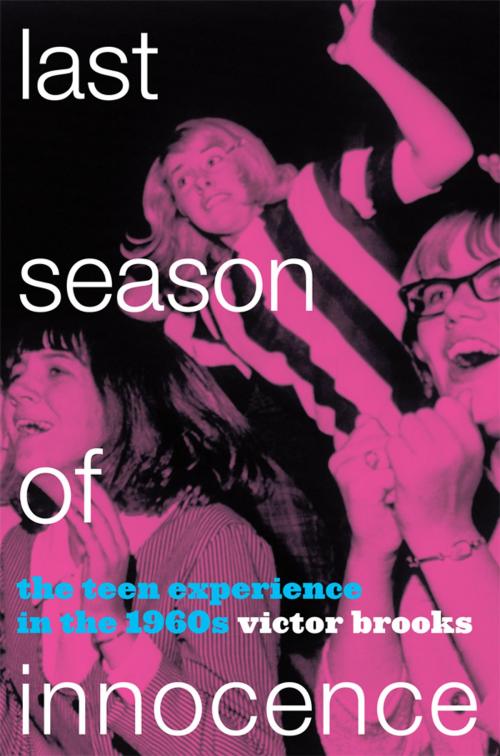Last Season of Innocence
The Teen Experience in the 1960s
Nonfiction, History, Americas, United States, 20th Century| Author: | Victor Brooks | ISBN: | 9781442209183 |
| Publisher: | Rowman & Littlefield Publishers | Publication: | April 5, 2012 |
| Imprint: | Rowman & Littlefield Publishers | Language: | English |
| Author: | Victor Brooks |
| ISBN: | 9781442209183 |
| Publisher: | Rowman & Littlefield Publishers |
| Publication: | April 5, 2012 |
| Imprint: | Rowman & Littlefield Publishers |
| Language: | English |
Last Season of Innocence discusses the lives of the preteens and teenagers who were in junior high school, high school, and the first year of college in the 1960s. These are the young people who read Seventeen and Mad, watched more television than their older siblings, and tended to listen to 45 rpm singles or "mono" LPs rather than the more sophisticated stereo albums of their older siblings. Substantial numbers of these teens could and did join political protests, but they also engaged in a more personal daily struggle with school dress codes and parental intrusion on social life. In a nation where a third of the population was under nineteen, they were hardly invisible, but their experience seems to have been marginalized by the twenty-somethings who largely redefined the meaning of the youth culture and took center stage in doing so. Brooks offers a unique account of the much-chronicled 1960s by examining the experiences of these preteens and teenagers.
Last Season of Innocence discusses the lives of the preteens and teenagers who were in junior high school, high school, and the first year of college in the 1960s. These are the young people who read Seventeen and Mad, watched more television than their older siblings, and tended to listen to 45 rpm singles or "mono" LPs rather than the more sophisticated stereo albums of their older siblings. Substantial numbers of these teens could and did join political protests, but they also engaged in a more personal daily struggle with school dress codes and parental intrusion on social life. In a nation where a third of the population was under nineteen, they were hardly invisible, but their experience seems to have been marginalized by the twenty-somethings who largely redefined the meaning of the youth culture and took center stage in doing so. Brooks offers a unique account of the much-chronicled 1960s by examining the experiences of these preteens and teenagers.















